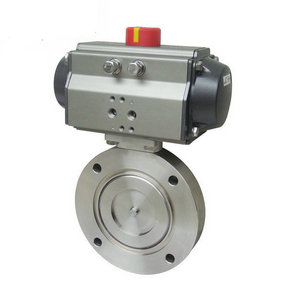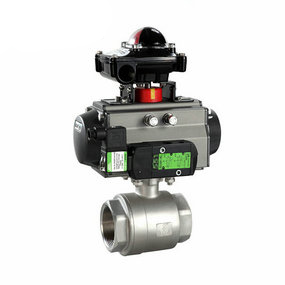How to connect the pneumatic insulation butterfly valve? The loading speed of tensile test is 1mm/min, record the corresponding displacement load curve, connect the inductor, and use YJY-13B extensometer to record the corresponding load deformation curve for in-plane tension. The recorded load deformation curve is converted into the corresponding stress strain curve through calculation, and the overall tensile elastic modulus and tensile strength of the composite are obtained.
(2) The loading speed of compression test is 0.5mm/min, and the corresponding displacement load curve is recorded at the same time. The loading end of the compression test is a cylinder with a diameter of 80mm. The sample is placed in the center of the cylinder, and the force is applied to the sample by moving the beam of the testing machine up and down. The recorded load deformation curve is converted into the corresponding stress strain curve to obtain the compressive elastic modulus and compressive strength of the composite.
(3) The loading speed of bending test is 1mm/min. The specimen is used as a laminated beam to conduct a transverse three-point bending test, and the corresponding center displacement load curve is recorded at the same time. The recorded load deformation curve is converted into the corresponding stress strain curve through calculation, and the bending elastic modulus and bending strength of the composite are obtained.
(4) The loading speed of the shear test is 0.5mm/min, and the corresponding displacement load curve is recorded at the same time. Through calculation, the recorded load deformation curve is converted into the corresponding stress strain curve, and the shear strength of the composite is obtained.
4.3 Test results From the average value of in-plane material properties of continuous fiber reinforced composites measured in the test, it can be seen that the mechanical properties of continuous fiber reinforced FRP are significantly improved compared with those of chopped fiber reinforced FRP, and the in-plane tensile strength is more than twice as high as that of chopped fiber reinforced FRP. This is because the fiber as the FRP reinforcement material is the main load-bearing part of FRP. After continuous fiber reinforcement is adopted, the percentage content of fiber can be as high as 70%, while the fiber content of chopped fiber reinforced FRP is only about 40%. Of course, the mechanical properties of FRP are also related to other factors, such as the type of resin.

3、 When the cryogenic liquid passes through the throttling element, with the change of pressure, vaporization and bubble extrusion may occur, which will cause great damage to the valve. For valves with this phenomenon, special consideration should be given to the structure of the valve and the material of the valve core internals. For flashing phenomenon, hard alloy (such as stelled) should be used as the valve core material. For cavitation phenomenon, the valve core should adopt a stepwise pressure reduction structure (such as cavitation cage structure) to eliminate cavitation.




